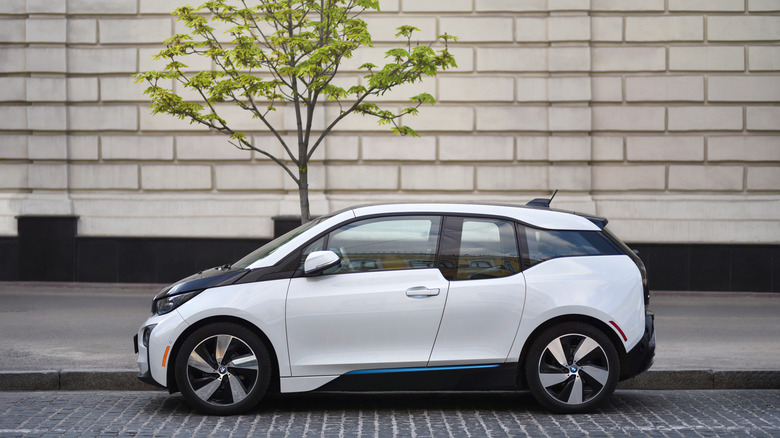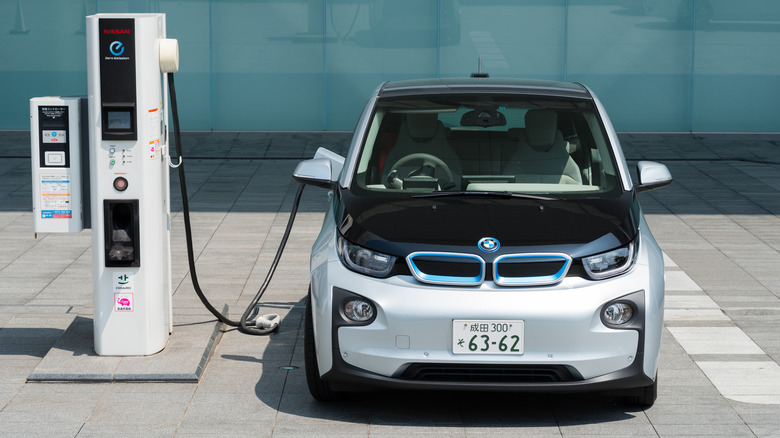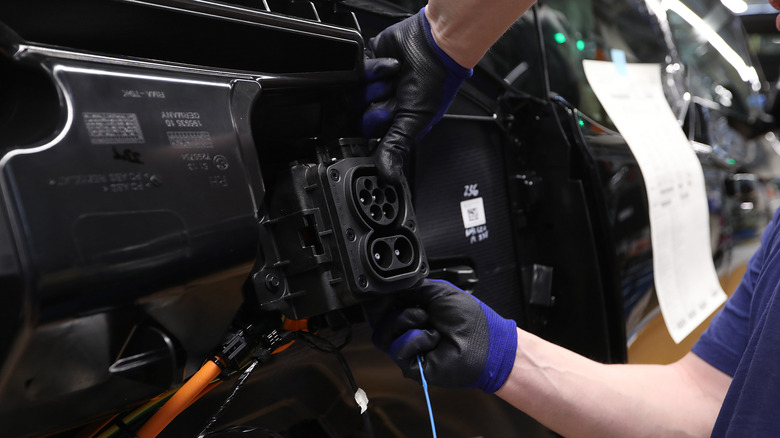Customers Are Modding Their BMW i3 For More Range And It's Not Very Safe
Since its initial release, BMW's i3 has been a bit of a disappointment to drivers due to its limited range. This was addressed somewhat when i3 included a range extender — a 2.4 gallon gas tank that acts as a mini-generator, kicking in when the battery is low to keep you going — that increased its approximate distance to upwards of 170 miles on a full battery and tank (and a claim of closer to 200 miles on newer models). However, for a lot of owners it still wasn't enough.
This limitation has prompted some users to modify their i3 with an additional gas tank, stored in the compact trunk space at the front of the car and piped into the range extender's fuel line. The makeshift modification allegedly adds a significant amount of mileage to the i3's range, though it's not the kind of at-home job the average driver can or should do.
Additionally, modding an i3 in this way can be extremely dangerous — not just because the car wasn't designed with this extra gas tank in mind, but because a whole lot can go wrong after the fact. It's not advised you try this modification.
Why this is a very, very bad idea
Modifying your car outside of factory specifications isn't always risky, depending on what you do to it, but this particular i3 enhancement certainly is. It doesn't necessarily void the warranty, but putting several gallons of fuel in the middle of a car's crumple zone is risky.
These areas are intentionally designed to collapse during a collision in order to disperse the force of the impact and better protect occupants from severe injury. If one were to put a gas tank in that trunk space (located in the front of the vehicle on the i3), it would likely rupture in an accident. Having gallons of gasoline spray everywhere after an impact creates a very dangerous scenario in the aftermath.
Even if you could somehow guarantee that your modded i3 would never be involved in an accident (virtually impossible due to outside factors while driving), there's also the risk of performing the modification incorrectly. If enough care isn't taken, if the connections aren't entirely precise, if the tank itself is a cheap plastic affair or has any kind of structural issues, you could end up with gas fumes leaking into the car's front trunk space. These are volatile, combustible, toxic gas fumes.
Slightly safer alternatives
An option that's safer than the mod, but does still pose potential risk to the i3's functionality, is to "hack" the internal computer and adjust the range extender settings. It's a process that can be performed with a laptop and some coding know-how, but it will likely void the warranty and could lead to a host of performance issues if you don't do it correctly.
That said, according to Motor Trend, it is possible to add a "Hold State of Charge" option to the dashboard that you can use to activate the range extender manually. This would allow you to switch over to the gas engine when you want — ideally when driving on the highway — rather than the i3 saving it for when the battery drops to around 5-percent power. This, however, will likely mean having to stop for gas to refill the tiny tank fairly often on long trips.
Older i3 models (like 2016 and prior) can also be hacked to "unlock" the full capacity of the fuel tank, which is physically 2.4 gallons but has been artificially limited to 1.9 gallons. It's unnecessary for any newer models but if you do have an older i3 a few lines of the right code in the right place can increase your available fuel reserves.


